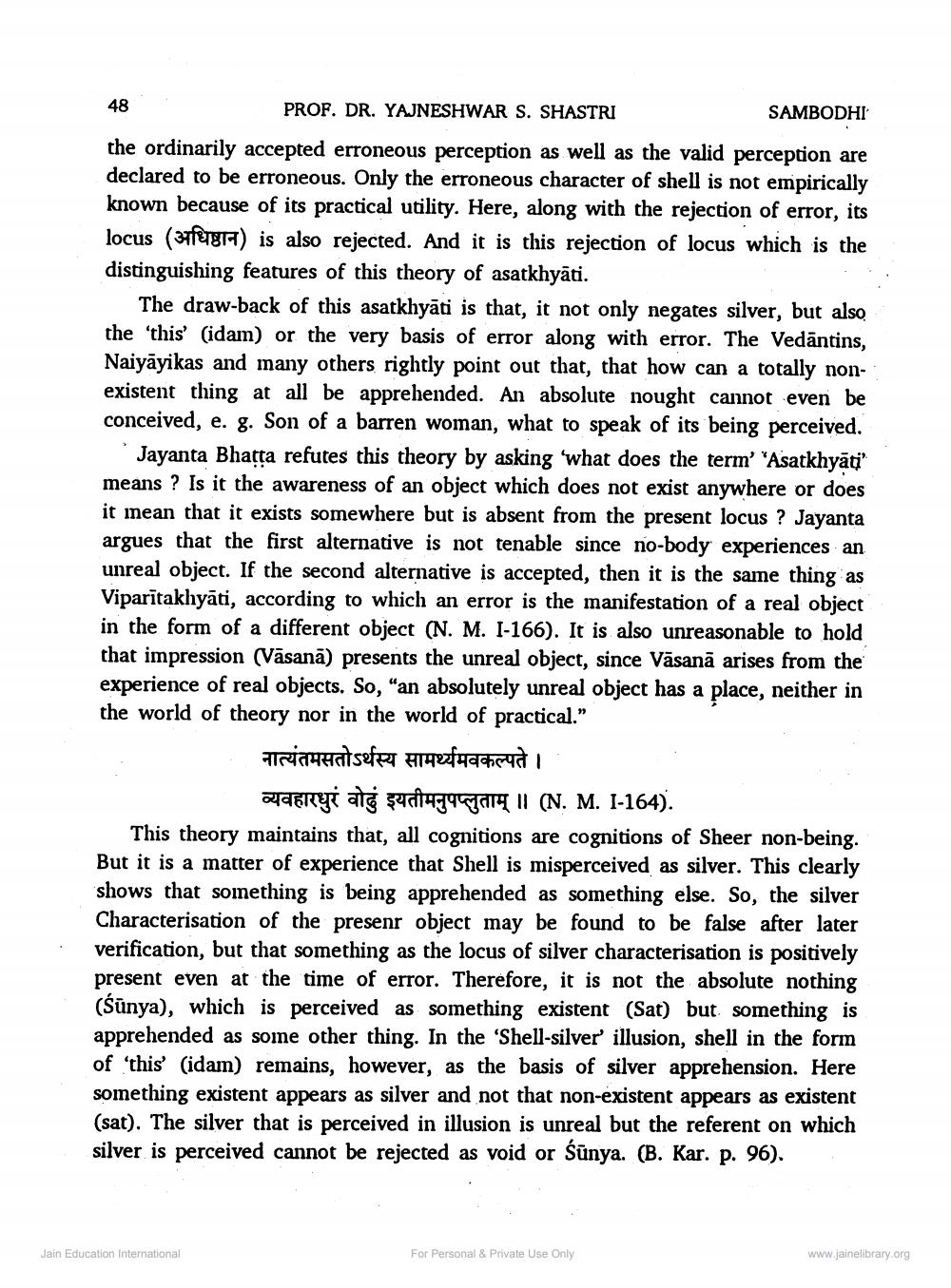________________
48
PROF. DR. YAJNESHWAR S. SHASTRI
SAMBODHI the ordinarily accepted erroneous perception as well as the valid perception are declared to be erroneous. Only the erroneous character of shell is not empirically known because of its practical utility. Here, along with the rejection of error, its locus (31fe81a) is also rejected. And it is this rejection of locus which is the distinguishing features of this theory of asatkhyāti.
The draw-back of this asatkhyāti is that, it not only negates silver, but also the 'this' (idam) or the very basis of error along with error. The Vedāntins, Naiyāyikas and many others rightly point out that, that how can a totally nonexistent thing at all be apprehended. An absolute nought cannot even be conceived, e. g. Son of a barren woman, what to speak of its being perceived.
Jayanta Bhatta refutes this theory by asking 'what does the term "Asatkhyāti' means? Is it the awareness of an object which does not exist anywhere or does it mean that it exists somewhere but is absent from the present locus ? Jayanta argues that the first alternative is not tenable since no-body experiences an unreal object. If the second alternative is accepted, then it is the same thing as Viparītakhyāti, according to which an error is the manifestation of a real object in the form of a different object (N. M. I-166). It is also unreasonable to hold that impression (Vāsanā) presents the unreal object, since Vāsanā arises from the experience of real objects. So, “an absolutely unreal object has a place, neither in the world of theory nor in the world of practical.”
नात्यंतमसतोऽर्थस्य सामर्थ्यमवकल्पते
26 yi atg sediugngary 11 (N. M. 1-164). This theory maintains that, all cognitions are cognitions of Sheer non-being. But it is a matter of experience that Shell is misperceived as silver. This clearly shows that something is being apprehended as something else. So, the silver Characterisation of the present object may be found to be false after later verification, but that something as the locus of silver characterisation is positively present even at the time of error. Therefore, it is not the absolute nothing (Śünya), which is perceived as something existent (Sat) but something is apprehended as some other thing. In the 'Shell-silver illusion, shell in the form of 'this' (idam) remains, however, as the basis of silver apprehension. Here something existent appears as silver and not that non-existent appears as existent (sat). The silver that is perceived in illusion is unreal but the referent on which silver is perceived cannot be rejected as void or Sūnya. (B. Kar. p. 96).
Jain Education International
For Personal & Private Use Only
www.jainelibrary.org




